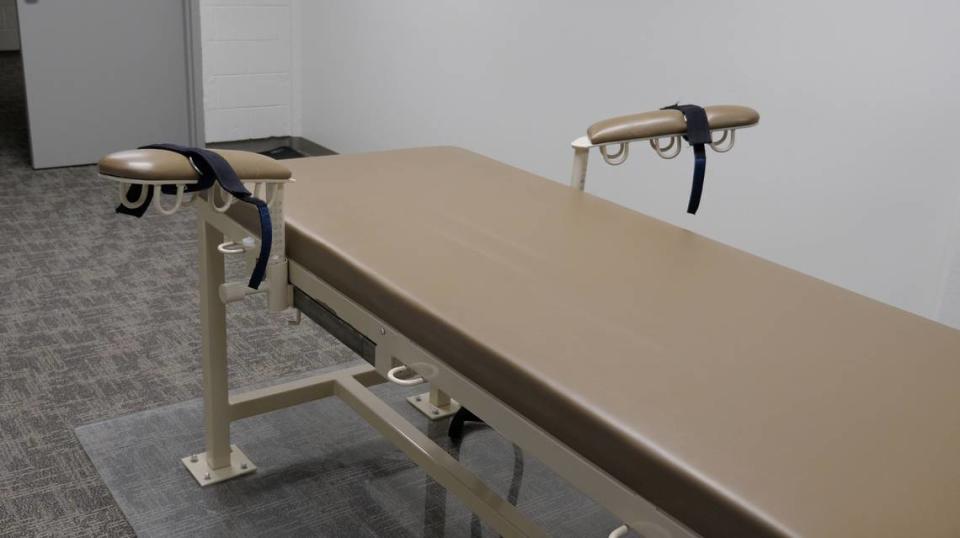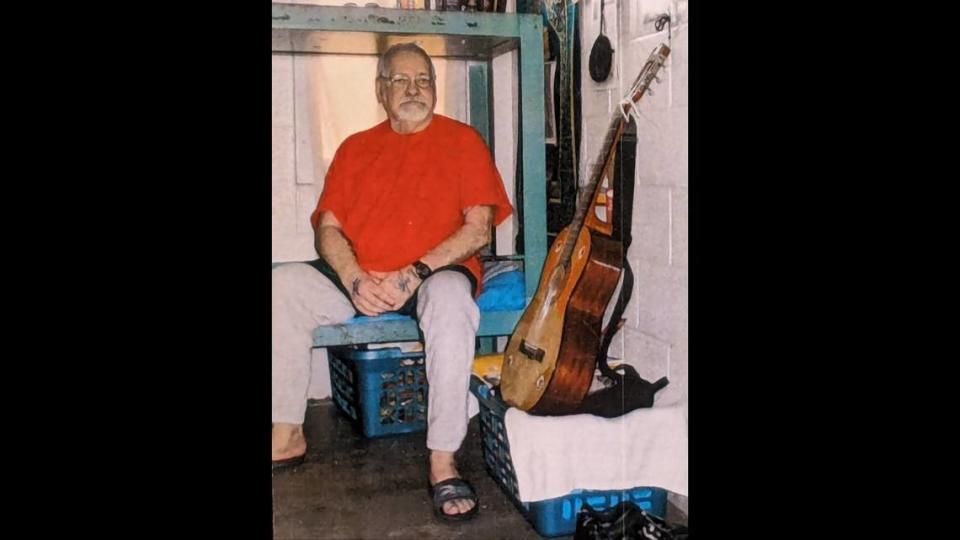Why couldn’t Idaho executioners find a vein for Thomas Creech? It’s rare for death row
For almost an hour, members of Idaho’s execution team searched to find a suitable vein in the body of death row prisoner Thomas Creech to deliver the dose of deadly drugs needed to fulfill his death sentence. They were unable, and the state’s first execution in nearly 12 years was aborted.
In fact, Creech’s attorneys had warned of likely “vein access problems” with their 73-year-old client in federal appeals filings ahead of last week’s failed attempt to end his life. They contended that Creech’s “complex and serious medical situation,” which includes an abdominal aortic aneurysm, uncontrolled high blood pressure and vascular disease, stood to make a lethal injection especially risky.
“At a minimum, they are part of the constellation of risk factors creating a perfect storm for a botched execution of Mr. Creech,” his attorneys wrote.

The circumstances that led to halting the execution of Idaho’s longest-serving death row prisoner are rare, but not unprecedented, according to data from the nonprofit Death Penalty Information Center. Creech is now at least the seventh documented case since 2009 of a called-off execution because executioners could not establish an IV line, according to Robert Dunham, former executive director of the Washington, D.C.-based nonprofit.
The single-digit total compares to 401 lethal injections carried out across the U.S. over that same time frame, the data showed. That’s just 1.7% of lethal injection attempts.
“He’s not an anomaly,” Dunham said in a phone interview with the Idaho Statesman. “To say that this was an execution that had unanticipated problems, though, would be wrong. … Simply given the fact that Mr. Creech is in his 70s and has been under the stress of a death sentence since 1982, he fits the profile of somebody who is likely to have compromised veins.”
Creech’s attorneys angry, but not surprised
Most of the instances since 2009 when a lethal injection was stopped because executioners couldn’t establish an IV happened in the past seven years. That indicates a rising frequency, based on fewer executions in the U.S. in recent decades, which has given way to an aging death row population, Dunham said.
The three prior cases all took place in Alabama: one in 2018 and two more in 2022. Alabama has since adopted use of nitrogen gas as an execution method and in January executed one of the two death row prisoners whose lethal injection had to be called off in 2022 because a vein couldn’t be located. The other from 2022 could be next.
Creech, who’s been incarcerated for almost a half-century, was first convicted in Idaho for a November 1974 double-murder in Valley County. He was later sentenced to death in 1982 after a murder conviction for beating a fellow prisoner to death.
Creech was also convicted of a fourth murder in Oregon and a fifth in California, which designates him as a serial killer under the FBI’s definition. He is suspected of killing several other people, including the victim in a 50-year-old cold case in Southern California.
Creech had avoided execution 11 times dating to his first conviction. It was the 12th time he was served with a death warrant in January that ultimately saw him strapped to a gurney last week before an audience as executioners explored eight different locations for a vein on Creech’s body.
Idaho Department of Correction Director Josh Tewalt testified before an Idaho House committee the day after last week’s unsuccessful execution. He said that members of the state’s execution team physically examined Creech before his Feb. 28 execution date and were confident they would be able to locate a vein, with one caveat.
“What that examination couldn’t tell was the quality of that access,” Tewalt said. “So what they found is when they could establish an IV, the vein would collapse, and they would be unable to continue down that path.”

Under Idaho’s execution procedures, the “medical team” members tasked with carrying out the lethal injection are volunteers with training and experience administering IVs. The executioners must have at least three years of medical experience and cannot have blood or legal relationships to either the prisoner, the prisoner’s victims or their respective families.
Beyond that, little else is known about who they may be, and Tewalt declined to answer questions about their specific qualifications immediately after Creech’s failed execution. Idaho has on the books a law shielding any identifying information of execution participants from release in court or through public records.
Creech’s attorneys with the nonprofit Federal Defender Services of Idaho said they were angry but not surprised that state prison officials were incapable of locating a vein to execute their client by lethal injection.
“This is what happens when unknown individuals with unknown training are assigned to carry out an execution,” Deborah A. Czuba, supervising attorney of the legal nonprofit’s unit that oversees death penalty cases, said in a statement.
Executioners had prior lethal injection experience
Every U.S. medical professional association — including for doctors, anesthesiologists, nurses, pharmacists and EMTs — asks members not to participate in capital punishment, according to Dunham and the associations’ position statements. Some medical practitioners risk losing their licenses if they ignore the guidance.
During Creech’s attempted execution, three members of the execution team were dressed in blue scrubs and caps and a white cloth covering their faces, except their eyes, which hid behind safety glasses, according to media witnesses. The team tried eight times to establish an IV, with each attempt taking four to six minutes. Two attempts were made in Creech’s right arm, then one in his right hand, before one in his left arm and four attempts in his lower left leg.
“Because of execution secrecy, we don’t know who was attempting to find the veins and how much of the difficulty is attributable to incompetence of execution personnel and how much is attributable to the problems with the defendant’s veins,” Dunham said. “In a number of the cases it’s clearly a combination of both, and with the aging of death row, it’s not surprising that it is happening with greater frequency now.”
At least one of the executioners for Creech’s lethal injection previously was involved in Idaho’s two most recent executions, in 2011 and 2012, Tewalt told the House committee.
“Every single member on our medical team is there for the right reasons. They’re there because they believe it is a sense of duty and that it is a process that deserves to be treated with dignity,” Tewalt said. “They have my complete trust and confidence and nobody took yesterday harder than they did.”
What may come next for Creech is unclear. Despite Tewalt’s assurances otherwise last week, the state prison system offered no additional information more than a week after the state’s first-ever failed lethal injection.
Idaho last year approved a law to make a firing squad the state’s backup execution method when lethal injection drugs are unavailable. But the construction renovation of the prison’s execution chamber to provide for a firing squad has yet to be designed, let alone built, Tewalt said.
“We don’t have an update or a timeline for when we will have answers,” Sanda Kuzeta-Cerimagic, IDOC’s spokesperson, said in an email to the Statesman.

Creech’s attorneys secured a stay of execution for their client immediately following his attempted execution and have since alleged violations of his constitutional rights against cruel and unusual punishment in new legal filings.
“This is precisely the kind of mishap we warned the state and the courts could happen when attempting to execute one of the country’s oldest death row inmates in circumstances completely shielded in secrecy,” Czuba said. “Unfortunately, what is absurd is Idaho’s continuing efforts to kill this harmless old man, who by this point surely has suffered enough.”
